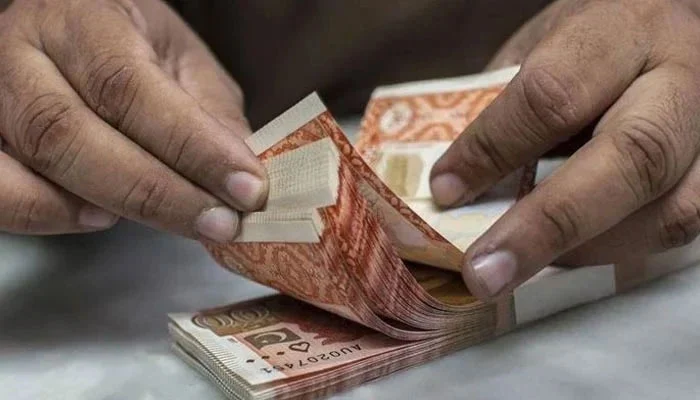KARACHI: The rupee dropped against the dollar on Thursday spurred by a delay in a staff level agreement with the International Monetary Fund (IMF), while importer demand and the US dollar’s rise versus the other major world currencies also hurt the local currency.
The local unit fell 1.13% or 3.18 rupees to 282.30 against the dollar in the interbank market.
In the open market, the domestic currency depreciated 3.50 rupees to close at 284.50 per dollar.
“Delay in IMF, rising dollar in global markets, and with the exchange rate now driven by market forces resulted in PKR falling today due to import demand,” said Mohammad Sohail, CEO of Topline Securities.
“IMF agreement and details on inflow from China and Saudi Arabia will remain a key driver of currency going forward,” Sohail added.
The completion of the IMF’s ninth review is the focus of attention. A staff-level agreement with the IMF will resume the stalled $6.5 billion loan programme, according to Pakistan’s finance minister Ishaq Dar, is unlikely to be reached this week. Such deadlines, however, have previously been missed numerous times.
The IMF resident representative said Pakistan would need to guarantee that its balance of payments deficit was adequately covered for the remainder of an IMF programme.
According to analysts, if an agreement is signed with the IMF, the executive board approval is expected in the first week of April.
In a briefing to the Senate Standing Committee on Finance, governor of the State Bank of Pakistan Jameel Ahmad stated that import compression would be lifted after the IMF review was over because the policy could not be maintained for an extended period of time.
He said pressure on the external account and a surge in inflation were primarily caused by low inflows as a result of the IMF programme’s delay, increased commodity prices on the global market, and the Ukraine-Russia war.
Dealers said depreciation of the rupee had persuaded exporters and Pakistanis living abroad to send their money through legal banking channels. The inflows of export earnings and worker remittances have increased.
“The rupee is under pressure because it appears that the central bank is buying liquidity from the market to bolster its foreign exchange reserves,” said a dealer.
He was of the view that the market factors would determine movement of the rupee (demand and supply of the dollars in the market), and the currency would continue to be under strain until the country’s reserves increased.



